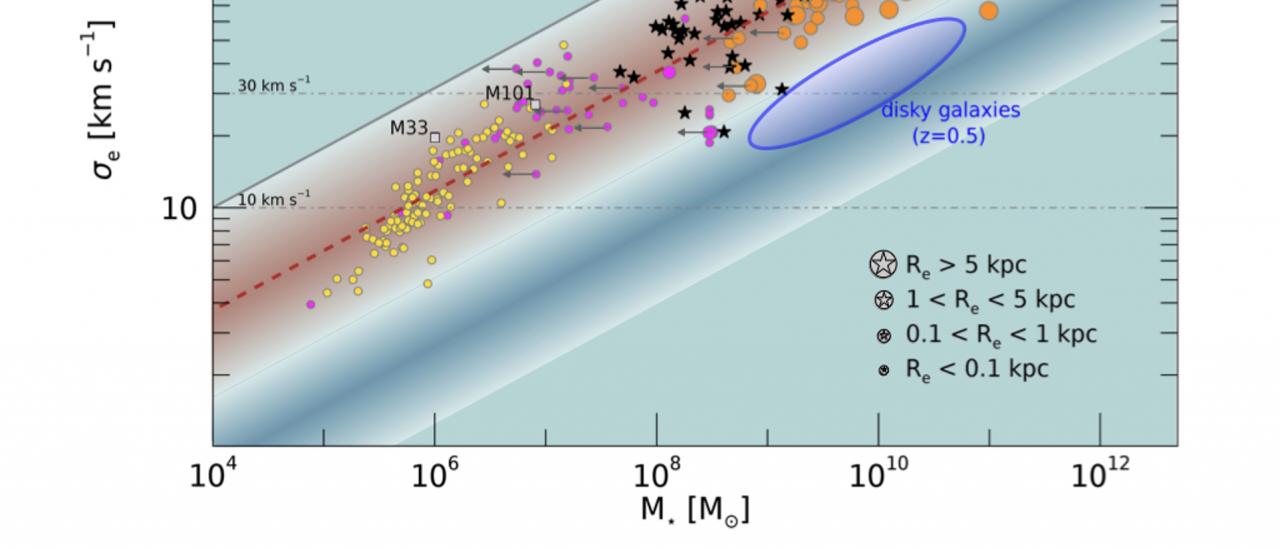The “Lambda Cold Dark Matter” (CDM) cosmological model is the current theory credited for reproducing the physics responsible for the formation and evolution of large-scale galactic systems in an accelerated expanding universe. In this context, the halos of CDM collapse and convert their energy reaching a state of equilibrium, allowing the formation of galaxies when the matter begins to cool. From an observational point of view, the behaviour of the luminous matter (stars and gas) is very different from that of dark matter. However, there are empirical relationships that reflect the fundamental physics that regulate the mutual behaviour of these two components, bright and dark. One of these relationships is a direct consequence of the Virial Theorem, which allows to express an interconnection of equilibrium through two simple quantities: the total mass of the stars (derived through the study of light) and their dynamics (regulated by both the luminous and the dark matter). Our observations show for the first time how the central area of some galaxies of the nearby universe, many of which are similar to the Milky Way in structure, keeps memory of a remote formation, contrary to what has been believed so far. The small bulges were thought to be slow and recent formation structures, following the formation of the galaxy disk and spiral arms, while we observe that their structure is compatible with a formation much more distant in time. In conclusion, what our study leads to speculate is that, hidden in the motion of the stars in the center of nearby galaxies, there are the remains of those galaxies that we observe in the primordial universe: very compact and ancient structures called "red nuggets", which evolve unaltered in the life of the universe.
Stellar mass vs. velocity dispersion relation showing that stellar systems, over 7 orders of magnitude in mass, follow the Virial relation. Small bulges and high redshift red nuggets also follows the relation indicating a common origin.
Advertised on
Authors
L. Costantin
Jairo
Méndez Abreu
E. M. Corsini
L. Morelli
A. de Lorenzo-Cáceres
I. Pagotto
V. Cuomo
José Alfonso
López Aguerri
M. Rubino
References




